Development
INDIVIDUAL COACHING
The Coaching
Professional Coaching is the support of people or teams in the development of their potential or their expertise in terms of professional objectives. Whether it is resolving a problem, supporting an evolution or following an integration, Coaching is above all a realisation by the concerned party of his or her working methods. It allows you to be more aware of your strong points, identify your areas in need of progress and to surpass them.
Coaching is at the crossroads of individual development and business so that the individual reaches his highest level of success and fulfilment because “the human resource is unlimited”.
COACHING SITUATIONS
-
When the business is in a phase of change
-
To help with a particular situation
-
To develop specific performances
OUR APPROACH
Determining objectives
We very precisely define the following, with the management and the employee:
- What do the difficulty or the areas in need of progress consist of?
- What are the concrete and realistic changes desired?
- What are their implications and consequences?
Development and implementation
With the individual we examine the way in which he or she tackles a problem (with advantages and disadvantages) to then lead him or her to come up with new solutions and to dare to implement them.
Evaluating breakthroughs already underway
Over two sessions, plans of action are provided subject to a debriefing and feedback in the next session.
Measuring the results with the individual and his or her line manager
This step allows us to evaluate the effects and relevance of the changes in different systems affected.
PRACTICAL ORGANISATION
- Coaching is organised around individual interview sessions lasting between one and two hours and with a varying rhythm depending on the expectations and needs of the individual (six to ten sessions on average).
- Work interviews can take place at the company, in our offices or in a neutral place.
- Personal diagnostic tools can be used ahead of the process.
TEAM COHESION / TEAM BUILDING
CONTEXT
Team Building aims to the assist a Team Leader and his or her team. The intended aim: to build an effective human team.
INTERVENTION
Step 1: meeting the Team Leader
The coach meets the Team Leader to discuss the life of his or her team. They will then explore any issues in the team and its organisation.
Step 2: meeting the team
The coach meets the team to present the intervention project. Through shared responsibility the team positions itself in relation to the process.
Step 3: implementing Team Building
The intervention aims to rotate meetings with the Team Leader with occasional group meetings with the whole team.
WHY TEAM BUILDING
- The development of cooperation,
- The growth of the team and the development of its autonomy,
- The creation of a shared sense, a shared vision,
- Developing better relationships within the team,
- Transforming working methods in order to better respond to a constantly changing environment,
- Assisting the Leader in managing his or her team as a Leader of Resources rather than a Leader Who Gives Orders.
- Working in transversality or with functional links
- Building a common culture
TEAM BUILDING CONTENT
Team Building develops over time and in connection with the Team Leader. The days’ content is “Co-Built”. In practice, the days aim to rotate:
- Time for theoretical input: training content on one or more chosen themes
- Time for experimentation: games for experimenting team work, unpacking representation, co-developing projects, etc. in a big group and in sub-groups
- Time for exchanges and regulations: sharing experience, adjusting working methods
OUR ASSETS
Our Coaches are trained in coaching by renowned and certifying schools (Vincent Lenhardt) and are supervised throughout their work. They have a solid grounding in business.
URVIKA Coaches take an enthusiastic, exacting and friendly approach in their work, with full respect for the ethics of their profession.
The coaching process is developed based on precise objectives formalised between the company, the employee and the URVIKA Coach. It is structured according to expectations.
YOU WANT TO MEET A CONSULTANT?
Lyon : +33 (0)4 78 38 65 70
Paris : +33 (0)1 80 06 84 74
Strasbourg : +33 (0)7 83 79 81 89
